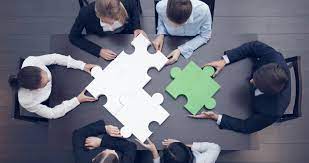The Strategy Process: A Guide to Effective Decision-Making
Developing a strategic plan is crucial for any organization looking to achieve its goals and objectives. The strategy process involves a series of steps that help in defining the direction and scope of an organization, as well as making decisions on allocating resources to pursue this strategy.
One of the key aspects of the strategy process is strategic analysis. This involves assessing the internal and external factors that may impact the organization’s ability to achieve its goals. By conducting a thorough analysis, organizations can identify strengths, weaknesses, opportunities, and threats that need to be considered when formulating their strategy.
Once the strategic analysis is complete, organizations can move on to setting objectives and goals. These objectives should be specific, measurable, achievable, relevant, and time-bound (SMART). By setting clear objectives, organizations can ensure that everyone is working towards a common goal.
After setting objectives, organizations need to develop strategies to achieve these goals. This may involve identifying target markets, developing marketing plans, or implementing operational changes. The key is to align these strategies with the overall objectives of the organization.
Implementation is another critical step in the strategy process. This involves putting the plans into action and monitoring progress towards achieving the defined goals. It is important for organizations to regularly review their strategies and make adjustments as needed based on changing circumstances.
In conclusion, the strategy process plays a vital role in helping organizations make informed decisions about how best to achieve their goals. By following a structured approach that includes strategic analysis, goal-setting, strategy development, and implementation, organizations can increase their chances of success in today’s competitive business environment.
Six Essential Steps for an Effective Strategy Development Process
- Clearly define your objectives and goals.
- Conduct a SWOT analysis to assess internal strengths and weaknesses, as well as external opportunities and threats.
- Involve key stakeholders in the strategy development process for buy-in and alignment.
- Develop an action plan with specific tasks, timelines, and responsibilities.
- Regularly monitor and evaluate progress towards strategic goals.
- Be flexible and willing to adjust the strategy based on changing circumstances.
Clearly define your objectives and goals.
In the strategy process, it is crucial to clearly define your objectives and goals. By setting specific, measurable, achievable, relevant, and time-bound (SMART) objectives, you provide a clear direction for your organization to follow. Clearly defined objectives help align efforts towards a common purpose, enabling better decision-making and resource allocation. When everyone understands what needs to be achieved and by when, it becomes easier to track progress and make necessary adjustments along the way to ensure success.
Conduct a SWOT analysis to assess internal strengths and weaknesses, as well as external opportunities and threats.
Conducting a SWOT analysis is a crucial step in the strategy process as it helps organizations assess their internal strengths and weaknesses, along with external opportunities and threats. By identifying these key factors, organizations can gain valuable insights into their current position in the market and make more informed decisions about their strategic direction. Understanding internal strengths and weaknesses allows organizations to leverage their advantages and address areas that need improvement, while recognizing external opportunities and threats enables them to capitalize on market trends and mitigate potential risks. Overall, a SWOT analysis provides a comprehensive overview that guides organizations in developing effective strategies to achieve their goals.
Involve key stakeholders in the strategy development process for buy-in and alignment.
In the strategy process, it is crucial to involve key stakeholders in the development phase to ensure buy-in and alignment with the organization’s goals. By engaging stakeholders early on, such as employees, customers, and partners, their perspectives and insights can be incorporated into the strategic planning. This not only fosters a sense of ownership and commitment among stakeholders but also helps in aligning everyone towards a common vision. Ultimately, involving key stakeholders in the strategy development process enhances decision-making quality and increases the likelihood of successful strategy implementation.
Develop an action plan with specific tasks, timelines, and responsibilities.
When implementing a strategy process, it is essential to develop an action plan that outlines specific tasks, timelines, and responsibilities. By clearly defining what needs to be done, when it needs to be completed, and who is responsible for each task, organizations can ensure that everyone is aligned and working towards the same goals. This action plan serves as a roadmap for implementation, helping to track progress, identify any potential issues, and make necessary adjustments along the way. Ultimately, having a well-defined action plan can greatly increase the chances of successfully executing the strategy and achieving desired outcomes.
Regularly monitor and evaluate progress towards strategic goals.
Regularly monitoring and evaluating progress towards strategic goals is essential in the strategy process. By keeping a close eye on how well the organization is progressing towards its objectives, leaders can identify any potential issues or obstacles early on and make necessary adjustments to stay on track. This ongoing evaluation allows for timely interventions and ensures that the organization remains agile and responsive to changing market conditions. Ultimately, by consistently monitoring progress, organizations can increase their chances of successfully achieving their strategic goals and staying competitive in the long run.
Be flexible and willing to adjust the strategy based on changing circumstances.
It is crucial to be flexible and open to adjusting your strategy based on changing circumstances. In today’s dynamic business environment, unforeseen events and shifts in the market can impact the effectiveness of your initial plan. By remaining adaptable and willing to make necessary changes, you can ensure that your strategy remains relevant and aligned with your goals. Embracing flexibility allows you to respond proactively to challenges and opportunities, ultimately increasing the likelihood of success in achieving your objectives.




